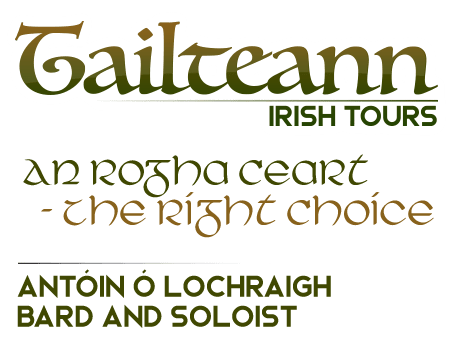An raibh a fhios agat? Did you know?
The Emperor’s Toothbrush
The word ‘Emperor’ conjures up all kinds of permutations which we might associate with latter day holders of the title or indeed figures from the distant past. Perhaps when we siphon back through the pages of history, we are drawn to the enigmatic but all persuasive character that was Napoleon Bonaparte. The ‘Little Corporal’ as he was endearingly nicknamed by his soldiers finds his way into our story via the elongated path of the historical highway manifested by way of some of his personal possessions bequeathed to a certain Dr.Barry Edward O’Meara who administered to Napoleon on St. Helena.
Luke Chaloner and The Smallest Cemetery in Dublin
When we embark on that final journey from this world to where ever, some among us will have made provision for that eventuality. For those with the financial largess, a fitting place of rest may be their desired choice or in contrast some will have opted for the more conventional mechanism of touch-button technology that dictates how we exit the theatre of life.
Peace and Reconciliation
Having more than a passing interest in history and having wanted for some time to visit the beautiful Glencree in County Wicklow, I finally managed to realise my dream. The Centre for Peace and Reconciliation was alas closed owing to the Pandemic but in close proximity is another symbol to the need for peace and reconciliation. Blessed with good weather I arrived at my destination in anticipation of seeing in person the final resting place of people who died while serving for Germany in…
The Monks of the Screw
This poem is attributable to John Philpot Curran and is not meant to be anything other than a poem in memory of the man and the society of which he was a member. The society which alas was prone to ‘Tippling’ was also called the’ ‘Order of St. Patrick’. To put it in context the club was in fact a Drinking Club and the screw referred to the device used to uncork a bottle of wine. Among its celebrated members were Henry Grattan and Lord Townsend to mention but a…
Tailteann Irish Tours and the Hungry Tree
One might be forgiven in trying to raise the status of the humble London Plain tree in the King’s Inns in Dublin, that ‘which accommodates the ‘Hungry Tree ‘.However, no matter what ones tastes are, when it come to the beautifying qualities or otherwise of this humble tree, it does attract more than its share of curious onlookers. Paradoxically it has an added attraction in that it holds court in the precincts of that bastion of legal prerogative, the…
Henry Grattan
Throughout the history of the oft times strained relationship between Ireland and England or even Britain, the name of Henry Grattan is remembered as a great parliamentarian, orator and pursuer of rights for all of the people of Ireland. His critics might say that he was for the maintenance of the link with England but did subscribe to Home Rule. He was not alone in that endeavour one might argue. Today we still recall the oft quoted ...Grattan’s parliament. Whether he deserves that accolade remains perhaps the subject of interpretation.

What You Can Expect
A walk through Dublin City in the company of a native Dubliner with the emphasis on history, culture and the great Irish ability to tell a story and to sing a song. In addition, and at no extra cost an actual rendition of a self-penned verse or perhaps a spot of warbling. I'd like to share my love of history with you, after all the past is our present and should be part of our future.
About The Tours
Tours are in English, with Irish translations, where appropriate. I also speak Intermediate level Dutch. Duration: 3 hours approx., with a short break in-between. Tour prices and booking options are available in the booking section.
The contact hours are Monday to Sunday, 09:00 - 20:00 IST.
Special Options
We can also arrange a half-day private tour for a maximum of twelve people. This incorporates a collection of parts of our three Tours combined. Tour duration 4-5 hours approx. A break for refreshments in between. Group of 2: €50 per person, Group of 3: €30 p.p., Group of 4 or more: €25 p.p. Refreshments: €10 approx. (This is an extra). Please contact us for details.
Copyright ©2025 Tailteann Tours
Designed by Aeronstudio™

